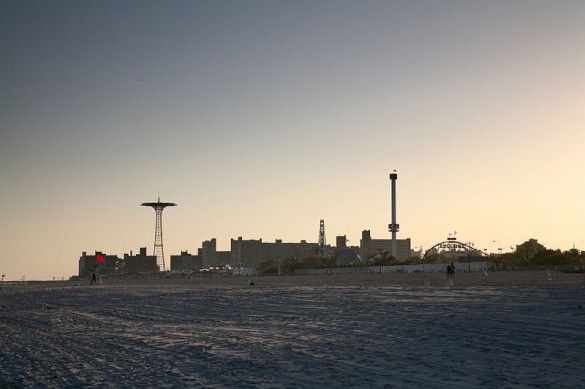Despite Raging Storms And Rising Waters, City Is Full Speed Ahead With Waterfront Development

For many of us, Hurricane Sandy was a wake up call. The storm smashed our businesses, flooded our homes and disrupted our lives, showing how fragile we all are so close to the sea. While scientists, engineers and residents all grapple with questions concerning the future of the city and how to best protect it, politicians and real estate developers are going full speed ahead in developing expensive real estate projects in vulnerable flood zones.
A story in the IBO web blog details the plans, the costs and the risks facing these projects in the face of a changing environment brought on by the reality of climate change.
While acknowledging that City Hall, led by Mayor Bloomberg, have put the science of climate change and its impact on the city front and center, in the form of the 2011 report Vision 2020: New York City Comprehensive Waterfront Plan, the city has given the go ahead to multi-million dollar projects right in the middle of Zone A evacuation areas.
Such projects include a $500 million dollar complex on the North Shore of Staten Island, which will feature the world’s largest Ferris wheel. Locally, the city approved an even bigger investment for Coney Island. City Hall rezoned the area to allow for more housing, hotels and a brand new amusement park. The city also wants to pump $400 million into the area to upgrade the sewers, acquire new land and improve the lighting and boardwalk.
While IBO notes that the city is making an effort to meet the guidelines and codes laid out by the Federal Emergency Agency, they might not be be enough in the face mega-storms that may become the norm in the coming future. Citing Yale University’s Environment 360 website:
“The storm easily overwhelmed many of the relatively minor adaptations that New York had already put in place.”
For example, Brooklyn Bridge Park, where another large development project is planned, was created with what are called “soft edges.” These are supposed to help reduce the force of waves and accommodate rising tidal levels. While these edges may work in many instances, they were no match for Sandy, which swamped the park and sent water lapping at the structure housing the newly installed carousel.
America is known for racing as fast as the forces of commerce will take her, especially in the world of real estate, but such speed may need to be tempered in this new world where Mother Nature’s power trumps progress. The question remains as to how many lessons we will have to learn before we fully heed the limits the natural world lays before us.




